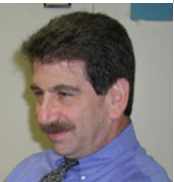13:30 - 16:00, International Conference Hall
Plenary Session 2
Environmental Exposure, Crisis Preparedness and Risk Communication
Chairs: Mari Christine and Oshima Sumiko
 |
Stephen Levin1, Robin Herbert1, Jacqueline Moline1, Andrew Todd1, Rebecca Smith1,3, Gwen Skloot1,2, Craig Katz1,3,4, and Paul Landsbergis1
1 World Trade Center Worker and Volunteer Medical Screening Program, Mount Sinai-Irving J. Selikoff Center for Occupational and Environmental Medicine, Department of Community and Preventive Medicine, Mount Sinai School of Medicine, New York, NY, the U.S.A.
2 Division of Pulmonary and Critical Care Medicine, Department of Medicine, Mount Sinai School of Medicine, New York, NY, the U.S.A.
3 Department of Psychiatry, Mount Sinai School of Medicine, New York, NY, the U.S.A.
4 Disaster Psychiatry Outreach, New York, NY, the U.S.A.
ABSTRACT:
Workers and volunteers involved in rescue and recovery efforts at or near the WTC site had potential exposures to: 1) a range of environmental toxins, including pulverized cement and glass, asbestos, fiberglass, and other respirable and larger particulate matter - much of it highly alkaline - as well as lead and other heavy metals, PCBs, dibenzofurans, volatile organic compounds and other products of combustion; 2) psychological trauma; and 3) physical hazards including fire, collapsing buildings, falling debris, noise and extremes of temperature. Because of early clinical evidence of occupational illness among workers and volunteers who responded to the 9/11 WTC disaster, The National Institute for Occupational Safety and Health (NIOSH) funded the WTC Worker and Volunteer Medical Screening Program. The primary goal of the program was to develop and implement rapidly a clinical program to provide over 11,000 free standardized exams to WTC responders.
Retrospective review of records from a sample of 250 of the first 500 participants was conducted. Eighty-eight percent reported at least one WTC-related upper respiratory symptom and 78% reported having had at least one WTC-related pulmonary symptom while at the site. Ten months or more after September 11, 2001, 73% had either upper airway symptoms or an abnormal nasal examination or both, and 57% had either pulmonary symptoms or abnormal spirometry or both. Fifty-two percent reported mental health symptoms requiring further evaluation; 21% of the sample reported symptoms consistent with Post Traumatic Stress Disorder. Updated data on health effects will be presented.
A December 2001 study by the New York City Department of Health and the Agency for Toxic Substances and Disease Registry found that 13% of residential dust samples contained greater than 1% asbestos by weight. As much as 4% asbestos by weight has been found in other samples of surface dust. The implications of these data regarding future risk to human health and public health policy will be discussed.